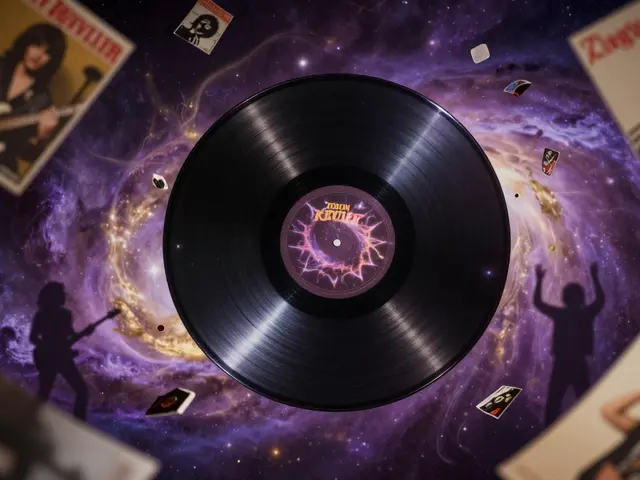The Song Structure of Pop Music
Before I delve into it, let’s think of pop songs like the perfect piece of chocolate cake. When I first started baking with Charlie, we’d lounge in our Melbourne kitchen, and naturally, Charlie, oh darling Charlie, would always mess up the ingredients. Once he added a cup of salt instead of sugar! But making cake, like pop music, requires a consistent formula. Each delicious slice mirrors a typical pop song that combines purposeful ingredients into an irresistible package. The pop music recipe applies chorus, bridge, and verse to keep us dancing to the rhythm.
Most pop songs typically adhere to a formulaic structure—one that evolves around the pattern of verse, chorus, verse, bridge, and chorus again. This formula is vital in creating predictability—a key device in setting up the listener’s expectations. Through repetition and variation, pop music creates a sure-footed platform that allows listeners to anticipate and participate in the music. This human need for predictability marries perfectly with our other desire for novelty—a balancing act pop music pulls off extraordinarily.
The Role of Repetition in Pop Music
Next to our delicious cake analogy, I want to explore the role of repetition in pop music. It's no secret that we humans love patterns. We love the predictable and the familiar. And guess what? Our brains are wired that way! Just like retelling a favourite story or episode from your favourite show, repetition in pop music serves to build anticipation and foster familiarity. It's the musical equivalent of "once upon a time".
Repetition in pop music repeats musical phrases, lines or sections in order to make the song memorable. This is achieved through the use of hooks, which are catchy elements that attract and hold the listeners' attention. Think of a pleasant memory that keeps looping in your mind. The hooks manage to grab you and keep you dialed onto the song. The chorus is traditionally considered the ‘hookiest’ part of a pop song, embedded with the catchiest melodies and lyrics—a marketing trick pop music nails effortlessly.
Understanding the Beat and Rhythm in Pop Music
Delving deeper into another layer of this enticing sweet treat, we come to grasp the beat and rhythm. Music, like any other art form, impacts our senses, emotions, and physical responses. It can stir our spirits, alter our mood and even make us move or dance. Beats and rhythms are the core stones for building this bridge of connectivity. Imagine stomping your foot or tapping your fingers to the tempo of a song; it's irresistible, right? That is the power of rhythm.
At its heart, pop music thrives on a steady rhythm. While the beats per minute (bpm) may vary across a multitude, from the slower ballads to the fast dance tracks, it's the persistent and predictable rhythm that keeps our feet tapping and hearts beating. Charlie and I often find ourselves dancing around the kitchen to each beat, creating happy memories and scores we will always remember.
The Impact of Lyrics and Melody in Pop Music
Let's now dive a bit deeper into the science behind pop music and discuss the impact of lyrics and melody. Behind the upbeat rhythm and catchy hooks of pop music lie its soul and heart—the lyrics and melody. The lyrics, often universally relatable and emotionally resonant, play a significant role in connecting the listener to the song.
On the other hand, a great melody can instantly make a song classic. It adds colour, mood, and personality to the lyrics and rhythm, allowing the song to come alive in the listener's memory. Whenever Charlie and I hear "our song," it invariably takes us back to the first time we heard it, making us relive that experience in an enchanting musical deja-vu. This emotional connection brought about by blending lyrics and melody elevates pop music beyond mere entertainment.
The Role of Production and Mixing in Pop Music
Lurking behind the scenes, like the backstage crew of a theatre production, is the role of music production and mixing. These often-overlooked elements can make or break a pop song. Just like perfecting the frosting on our cake, the final touches on a song are all about finesse and precision.
Producers and sound engineers are like the architects of pop music. Using delicate sound processing techniques such as equalization, panning, reverb, and dynamic processing, they create the perfect sonic landscape for a pop song. Top-class production can transform a simple melody or rhythm into a captivating sonic experience. Next time you listen to your favourite pop tune, appreciate the behind-the-scenes work that made it possible!
How Pop Music Influences our Behaviour
Reflecting back into a psychological perspective, it’s remarkable how pop music influences our behaviour. Here's an interesting fact: did you know pop music can even influence your shopping behaviour? Psychologists have found that certain types of music can make people spend more time in a store and ultimately buy more. Charlie will attest, the number of times I've found myself roaming in stores, completely captivated by some catchy tune playing in the background, is countless!
We associate certain melodies and rhythms with our emotions, memories, and even social bonds, stimulating our brains in ways that few other art forms do. It is incredible how a simple sequence of sounds can lead us on a roller-coaster of emotions and reactions. Remember, the next time you listen to a pop song, it’s not just music—it’s psychology, our humanity, and a delicious slice of life!
Pop Music as a Global Language
Lastly but not least, the charm of pop music is indeed its universal language that bridges cultures, defies boundaries, and connects millions of people worldwide. Music, especially pop music, is a vital cultural ambassador, helping us understand, appreciate, and even fall in love with cultures that we are not familiar with.
Pop music, with its universal charm and broad appeal, has succeeded in creating a global community that transcends linguistic barriers, and cultural or geographical boundaries. Charlie and I have often found ourselves humming along Korean pop hits or Spanish ballads at home in Melbourne, truly embodying the spirit of global unity fostered by pop music. Music has the magical power to unify and speak directly to the soul, and pop music plays a substantial role in this global communication.
Closing Thoughts
The science behind pop music is incredibly fascinating and intricate. It's a blend of predictable structures, catching hooks, compelling rhythms, resonating lyrics, and high-end production. But the beauty of pop music—and all music, in reality—is that its influence goes beyond the science. It affects our behaviour, connects societies, and touches our souls. Remember, the next time you’re in the kitchen baking or shopping at the mall, and find yourself tapping your foot to a pop song, just imagine yourself as part of that spectacular cake, experiencing the magic of pop music science!






